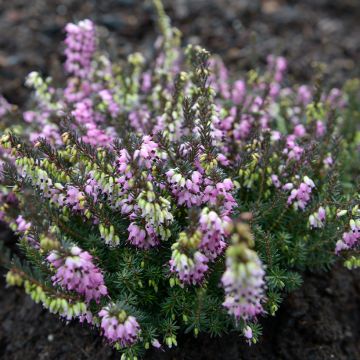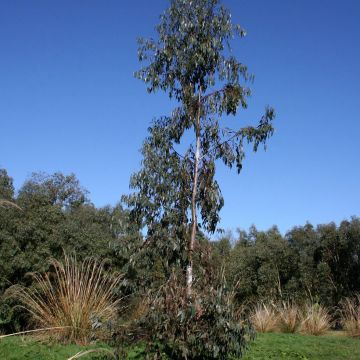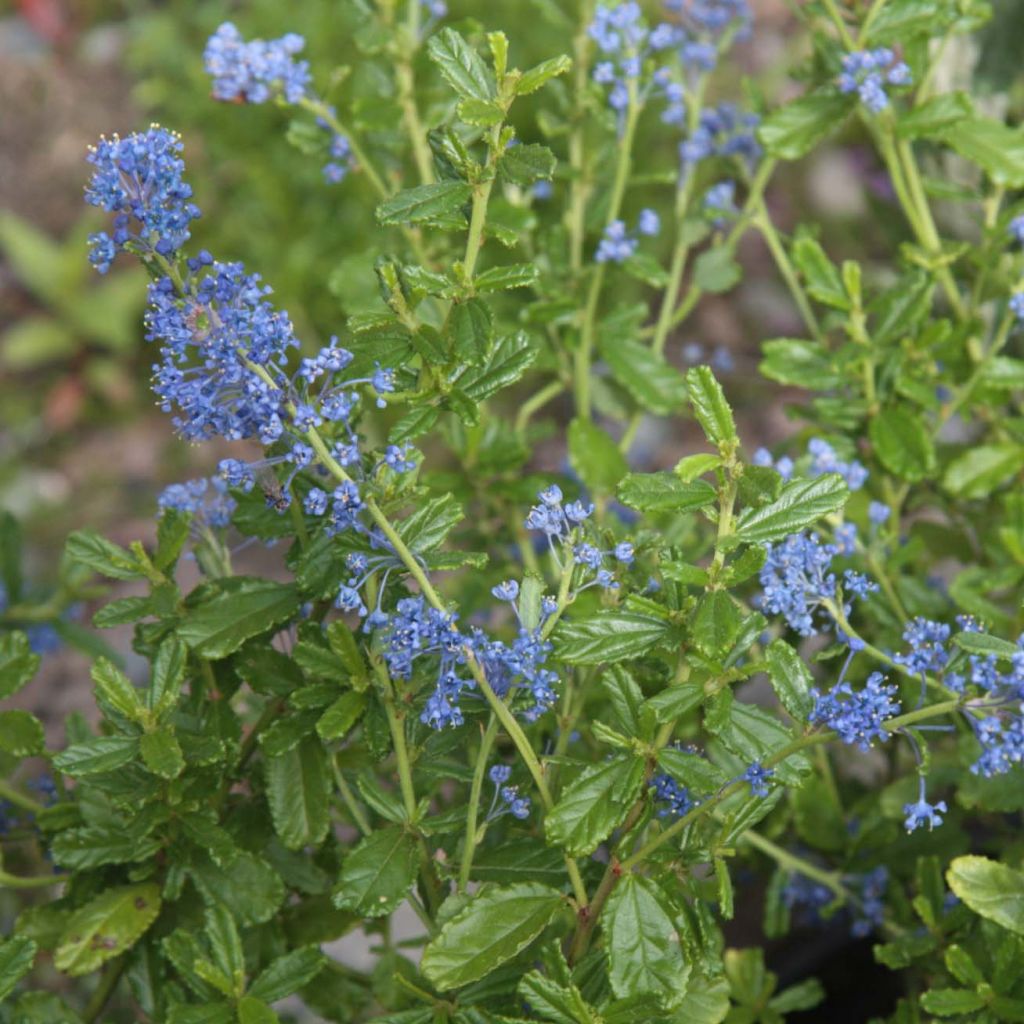

Ceanothus foliosus Italian Skies
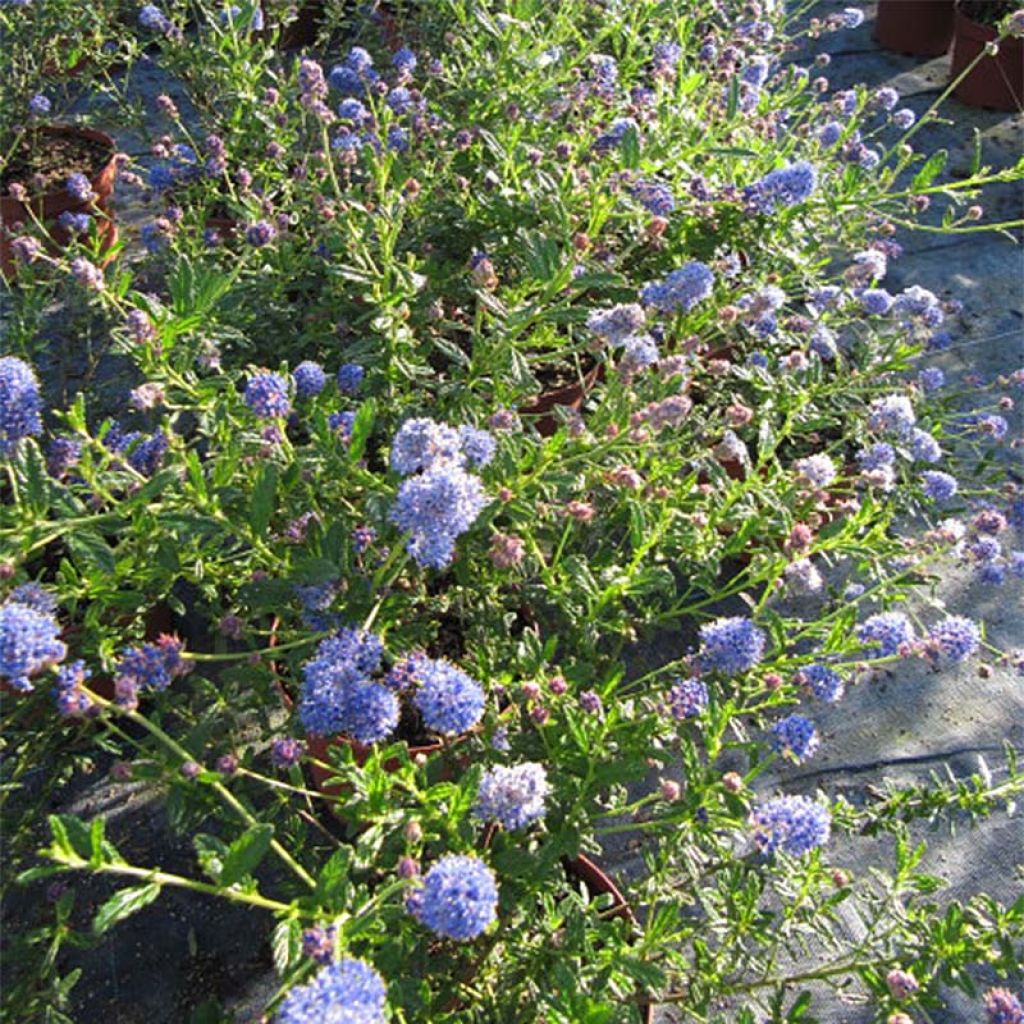

Ceanothus foliosus Italian Skies
Ceanothus foliosus Italian Skies
Ceanothus x foliosus Italian Skies
California Lilac, Blue Blossom
This item cannot be shipped to the selected country
Delivery charge from €5.90
Delivery charge from €5.90
Delivery charge from €5.90
More information
Schedule delivery date,
and select date in basket
This plant carries a 24 months recovery warranty
More information
We guarantee the quality of our plants for a full growing cycle, and will replace at our expense any plant that fails to recover under normal climatic and planting conditions.
From €5.90 for pickup delivery and €6.90 for home delivery
Express home delivery from €8.90.
From €5.90 for pickup delivery and €6.90 for home delivery
Express home delivery from €8.90.
From €5.90 for pickup delivery and €6.90 for home delivery
Express home delivery from €8.90.

Does this plant fit my garden?
Set up your Plantfit profile →
Description
Ceanothus x foliosus 'Italian Skies' is one of the easiest varieties of ceanothus to grow due to its minimal requirements. This evergreen shrub with modest growth easily fits into a small garden or a large pot on a terrace. Elegant, it forms a regular dome covered with small, dark green and glossy foliage that remains decorative all year round. Its spring flowering in small clusters of bright blue emits a powerful honey scent that attracts bees. Indifferent to the nature of the soil, as long as it is properly drained, it is unaffected by summer droughts and can withstand short frosts of around -12° C (10.4° F) once established.
'Italian Skies' is a hybrid horticultural variety obtained at the Washington Arboretum in 1956. One of its two parents is Ceanothus foliosus, a botanical species endemic to California. Ceanothus belong to the Rhamnaceae family and are cousins of buckthorn (Frangula purging).
'Italian Skies' is a bushy shrub, wider than it is tall, supported by flexible branches that slightly arch towards the ground. It is a dense and regular shrub that can reach 1 m (3.3 ft) in height, and 2 m (6.6 ft) in width. Its pink flower buds appear in April-May, depending on the climate, at the tips of the previous year's branches, grouped in dense small panicles. They open into flowers of a particularly bright blue, on small clusters measuring 3 cm to 4 cm (1.2 in to 1.6 in) in length and 1.5 cm (0.6 in) in width. This remarkably fragrant flowering is very rich in nectar. It is followed by the formation of seeds which, once mature, are explosively released. The evergreen foliage is composed of small, elongated, undulate, and finely dentate leaves, with a glossy dark green colour, measuring 1 cm to 2 cm (0.4 in to 0.8 in) in length. Its average lifespan is 15 to 20 years, and it prefers a maritime climate.
In recent years, horticulturists have 'invented' beautiful varieties of ceanothus that are easier to acclimatise and have more modest dimensions, suitable for our gardens and terraces. Tolerating clayey or slightly calcareous soils if they are loose, 'Italian Skies' is a beautiful subject to plant in isolation, against a terrace, not far from the front door or leaning against a low wall. It can also be mixed with a mass of easy-to-grow shrubs in mild climates, which will precede or take over its magnificent flowering: Buddleia officinalis (pale pink, starting in February), Fremontodendron californicum (in April-May-June), shrubby rock roses (Cistus pulverulentus, in May), or even coronillas and China rose 'Mutabilis'. It blooms simultaneously with Banksian yellow rose: the combination of the butter-yellow pompoms of the rose and the deep blue flowers of the ceanothus is incomparably vibrant. It can be placed in a mass planting, as a free hedge, in an oceanic or Mediterranean garden, or even by the seaside. This variety will also enhance your balconies and terraces, with a few precautions.
Report an error about the product description
Ceanothus foliosus Italian Skies in pictures
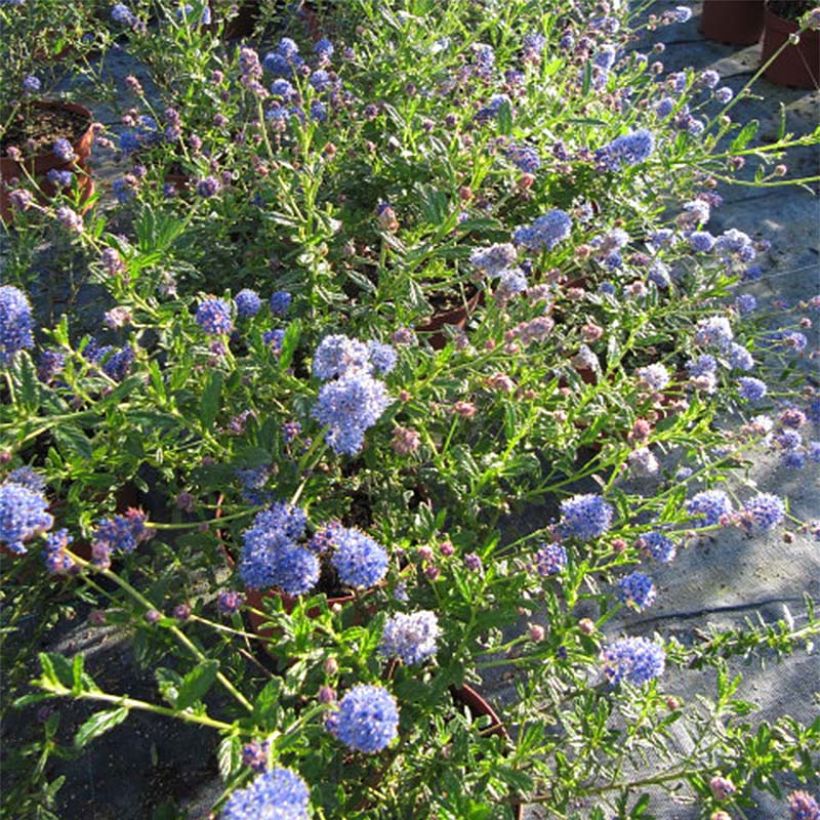

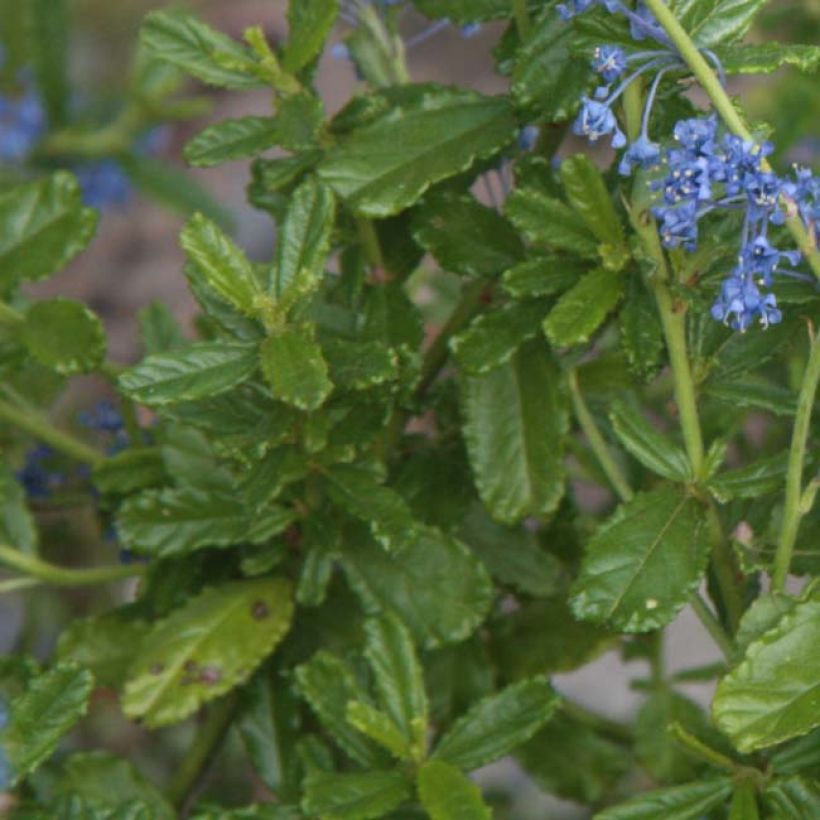

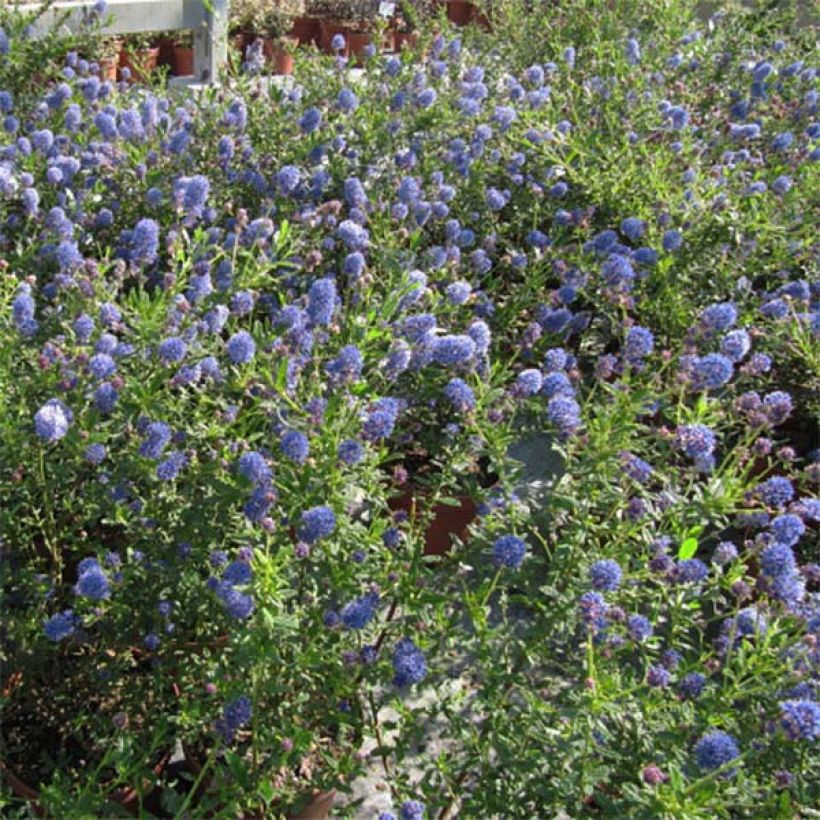

Plant habit
Flowering
Foliage
Botanical data
Ceanothus
x foliosus
Italian Skies
Rhamnaceae
California Lilac, Blue Blossom
Cultivar or hybrid
Other Ceanothus
Planting and care
Place in a sunny or partially shaded position. Plant in ordinary soil that needs to be moist but well-drained in summer, and absolutely well-drained. Be careful of cold drafts; place it near a wall to protect it. Plant it all year round, excluding frost, by mixing your garden soil with compost, coarse sand, perlite, or any material that does not retain moisture. Water generously once or twice a week to promote establishment. Water only twice a month from the third year onwards, and during prolonged drought. It is a plant that requires very little maintenance and grows without difficulty as long as the required conditions are met. Constant moisture in the soil during the winter period, but also in summer in hot regions, is harmful to the plant. The combination of heat and humidity leads to the development of a fungus that attacks the base of the plant and will be fatal to it. In regions affected by high summer temperatures, it is better to plant Ceanothus on a mound. You can lightly prune the stems after flowering to encourage branching. Fertiliser applications are not recommended (just add a little horn at the bottom of the planting hole). Avoid severe pruning.
Pot Culture:
Use a lightweight substrate, a mixture of garden soil, coarse sand, and compost. In summer, water abundantly only when the soil is dry, but space out the waterings. The plant can be stored in a cool and bright place, with little or no heating, protected from severe frost. Apply a slow-release fertiliser in spring and autumn.
Planting period
Intended location
Care
-
, onOrder confirmed
Reply from on Promesse de fleurs
Evergreen shrubs
Haven't found what you were looking for?
Hardiness is the lowest winter temperature a plant can endure without suffering serious damage or even dying. However, hardiness is affected by location (a sheltered area, such as a patio), protection (winter cover) and soil type (hardiness is improved by well-drained soil).

Photo Sharing Terms & Conditions
In order to encourage gardeners to interact and share their experiences, Promesse de fleurs offers various media enabling content to be uploaded onto its Site - in particular via the ‘Photo sharing’ module.
The User agrees to refrain from:
- Posting any content that is illegal, prejudicial, insulting, racist, inciteful to hatred, revisionist, contrary to public decency, that infringes on privacy or on the privacy rights of third parties, in particular the publicity rights of persons and goods, intellectual property rights, or the right to privacy.
- Submitting content on behalf of a third party;
- Impersonate the identity of a third party and/or publish any personal information about a third party;
In general, the User undertakes to refrain from any unethical behaviour.
All Content (in particular text, comments, files, images, photos, videos, creative works, etc.), which may be subject to property or intellectual property rights, image or other private rights, shall remain the property of the User, subject to the limited rights granted by the terms of the licence granted by Promesse de fleurs as stated below. Users are at liberty to publish or not to publish such Content on the Site, notably via the ‘Photo Sharing’ facility, and accept that this Content shall be made public and freely accessible, notably on the Internet.
Users further acknowledge, undertake to have ,and guarantee that they hold all necessary rights and permissions to publish such material on the Site, in particular with regard to the legislation in force pertaining to any privacy, property, intellectual property, image, or contractual rights, or rights of any other nature. By publishing such Content on the Site, Users acknowledge accepting full liability as publishers of the Content within the meaning of the law, and grant Promesse de fleurs, free of charge, an inclusive, worldwide licence for the said Content for the entire duration of its publication, including all reproduction, representation, up/downloading, displaying, performing, transmission, and storage rights.
Users also grant permission for their name to be linked to the Content and accept that this link may not always be made available.
By engaging in posting material, Users consent to their Content becoming automatically accessible on the Internet, in particular on other sites and/or blogs and/or web pages of the Promesse de fleurs site, including in particular social pages and the Promesse de fleurs catalogue.
Users may secure the removal of entrusted content free of charge by issuing a simple request via our contact form.
The flowering period indicated on our website applies to countries and regions located in USDA zone 8 (France, the United Kingdom, Ireland, the Netherlands, etc.)
It will vary according to where you live:
- In zones 9 to 10 (Italy, Spain, Greece, etc.), flowering will occur about 2 to 4 weeks earlier.
- In zones 6 to 7 (Germany, Poland, Slovenia, and lower mountainous regions), flowering will be delayed by 2 to 3 weeks.
- In zone 5 (Central Europe, Scandinavia), blooming will be delayed by 3 to 5 weeks.
In temperate climates, pruning of spring-flowering shrubs (forsythia, spireas, etc.) should be done just after flowering.
Pruning of summer-flowering shrubs (Indian Lilac, Perovskia, etc.) can be done in winter or spring.
In cold regions as well as with frost-sensitive plants, avoid pruning too early when severe frosts may still occur.
The planting period indicated on our website applies to countries and regions located in USDA zone 8 (France, United Kingdom, Ireland, Netherlands).
It will vary according to where you live:
- In Mediterranean zones (Marseille, Madrid, Milan, etc.), autumn and winter are the best planting periods.
- In continental zones (Strasbourg, Munich, Vienna, etc.), delay planting by 2 to 3 weeks in spring and bring it forward by 2 to 4 weeks in autumn.
- In mountainous regions (the Alps, Pyrenees, Carpathians, etc.), it is best to plant in late spring (May-June) or late summer (August-September).
The harvesting period indicated on our website applies to countries and regions in USDA zone 8 (France, England, Ireland, the Netherlands).
In colder areas (Scandinavia, Poland, Austria...) fruit and vegetable harvests are likely to be delayed by 3-4 weeks.
In warmer areas (Italy, Spain, Greece, etc.), harvesting will probably take place earlier, depending on weather conditions.
The sowing periods indicated on our website apply to countries and regions within USDA Zone 8 (France, UK, Ireland, Netherlands).
In colder areas (Scandinavia, Poland, Austria...), delay any outdoor sowing by 3-4 weeks, or sow under glass.
In warmer climes (Italy, Spain, Greece, etc.), bring outdoor sowing forward by a few weeks.


















































